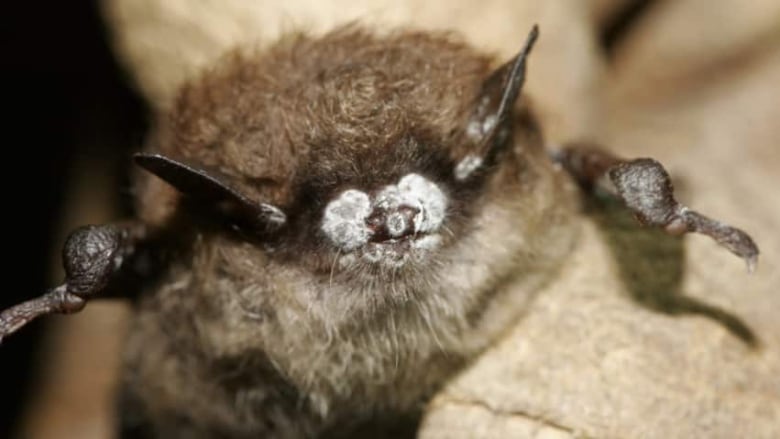Bat biologists in Yukon and B.C. brace for arrival of deadly white-nose syndrome
First bat with syndrome in western North America was discovered in March

Biologists on Canada's western coast are bracing for the arrival of a deadly disease called white-nose syndrome in British Columbia and Yukon's bats, but a number of mysteries mean the disease's impact is still unclear.
The disease, which causes white patches to grow on bats' noses and wings, has killed more than six million bats in 28 U.S. states and five Canadian provincessince it was first discovered in eastern New York in the winter of 2006-2007.
The first afflicted batwest of the Rocky Mountains was found in Washington in early March. Experts and biologists have held emergency meetings in British Columbia, preparing for the disease to arrive in full force.
Bats in the east hibernate in large colonies, spreading the disease through close contact over the winter, but western bat populations are more diverse, said Leigh Anne Isaac, a member of the B.C. Bat Action Team, meaning that it's unclear how the disease will manifest in the region.
"It could be the strategies that bats are using out west are different," said Isaac."There might be lots of different areas where bats can hibernate over winter, so they are not restricted to key sites."
Biologists are still unclear on how and where exactly bats hibernate in the west over the winter, adding to the mystery.
"It's very difficult to find theseoverwinteringsites where bats spend the winter," said Isaac. "We've got high mountainous and rugged territory.Many parts of it areinaccessible during the winter time."
Could moving to the North help?
The situation becomes even more complicated when climate change is added to the mix, according to Cori Lausen, a biologist with the Wildlife Conservation Society of Canada.
Climate change may mean the bat population begins to move further north than in years past, which Lausen says may help populations survive white-nose syndrome, which doesn't thrive in colder temperatures.
"Quite honestly, we are looking at the North as a potential refuge from white-nose so these underground environments might be existing in these northern areas," she said.
The discovery of a bat in Washington with the syndrome came earlier than scientists expected, ultimately leading to the emergency meetings. Biologists are calling on the government to help them fund their researchbefore the syndrome shows up in Western Canada, allowing them to work ahead of the disease, instead of behind.
With files from Heather Avery












_(720p).jpg)


 OFFICIAL HD MUSIC VIDEO.jpg)
.jpg)



























































































